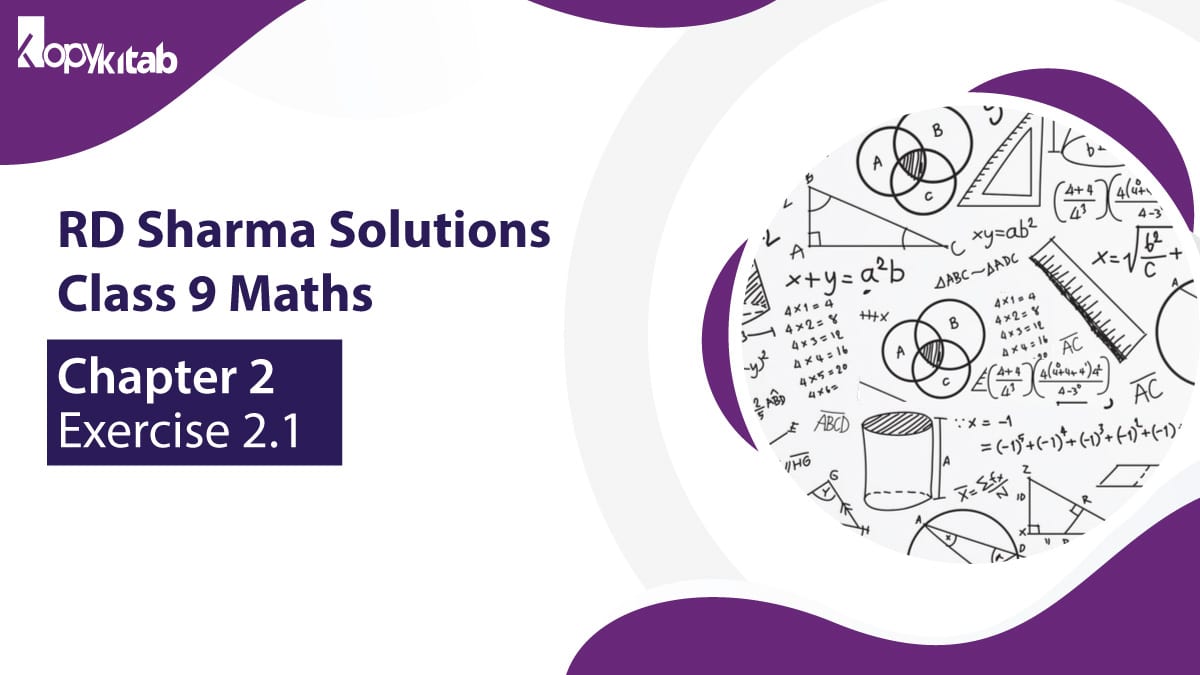The first exercise of the RD Sharma Chapter 2 Exponents of Real Numbers for Class 9th is based on the topics like- Exponents of Real Numbers Introduction, Integral Exponents of a Real Number, Positive Integral Power & Negative Integral Power, and Laws of Integral Exponents. The questions in the following RD Sharma Chapter 2 Class 9 Maths Exercise 2.1 Solutions PDF are prepared by our experts, which helps students to learn about the Exponents of Real Number in an easy way with tricks and tips.
With the help of the RD Sharma Chapter 2 Class 9 Maths Exercise 2.1 Solutions PDF, students do practice offline with the informative solutions, which are prepared by our experts based on the CBSE Syllabus of 9th Class for students to prepare for the exam.
Download RD Sharma Chapter 2 Class 9 Maths Exercise 2.1 Solutions PDF
Solutions for Class 9 Maths Chapter 2 Exponents of Real Numbers Exercise 2.1
Important Definitions RD Sharma Chapter 2 Class 9 Maths Exercise 2.1 Solutions
Look down to know the detail about the topics and sub-topics of Chapter 2 of Class 9th Maths Exercise 2.1, “Exponents of Real Number.”
Exponents of Real Numbers Introduction
The exponent means writing large numbers into a shorter form, so they become easy to read, compare, and understand.
For Example-
4 × 4 × 4 × 4 × 4 can be written as 4⁵ and is read as 4 put to the power 5.
Here the base is 4 and the exponent is 5 (the power put on 4).
Rules of Exponent to Remember
- Multiply → Add exponents
- Divide → Subtract exponents
- Power to a power → Multiply exponents
- Negative → Make Denominators as Numerator and Vice-Versa.
Integral Exponents of a Real Number
As we know, Real Numbers is a set of Natural Numbers, Whole Numbers, Rational Number, Irrational Numbers, Small Numbers, Large Numbers, etc.
So, the integral exponents of a Real Number are Positive and Negative Integrals.
For Example-
= y × y × y × y (Here, 4 lots of y being multiplied together, whereas, “y” is the base and “4” is the exponent).
Positive Integral Power & Negative Integral Power
Positive Integral Power- A positive Integral Power of any real number is the same as the exponent of a real number. There are no changes required.
For Example-
= 222 = 8
Whereas 2 is the base and 3 is the exponent of the Positive Integral Power.
NOTE-
For any non-zero real number ‘a’, we define = 1.
For Example-
- 3° = 1
- 7° = 1
Negative Integral Power- For Negative Integral Power, while solving the problems, students have to make the denominator as the numerator and vice-versa (like- =)to remove the negative integral power of any real number.
For Example-
- (3/7)-3 = (7/3)3
- (4)-9 = (1/4)9
Laws of Integral Exponents
There are four laws of integral exponents mentioned in the following points-
- First law: If ‘p’ is any real number and ‘m & n’ are positive integers, then x =
- Second Law: If ‘p’ is a non-zero real number and ‘m & n’ are positive integers, then / =
- Third law: If ‘p’ is any real number and ‘m & n’ are positive integers, then ==
- Fourth Law: If ‘p’ and ‘q’ are real numbers and ‘m & n’ are positive integers then = and = /, where ‘q’ is not equal to zero.
